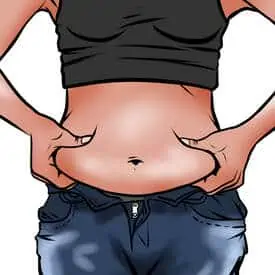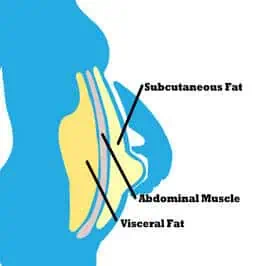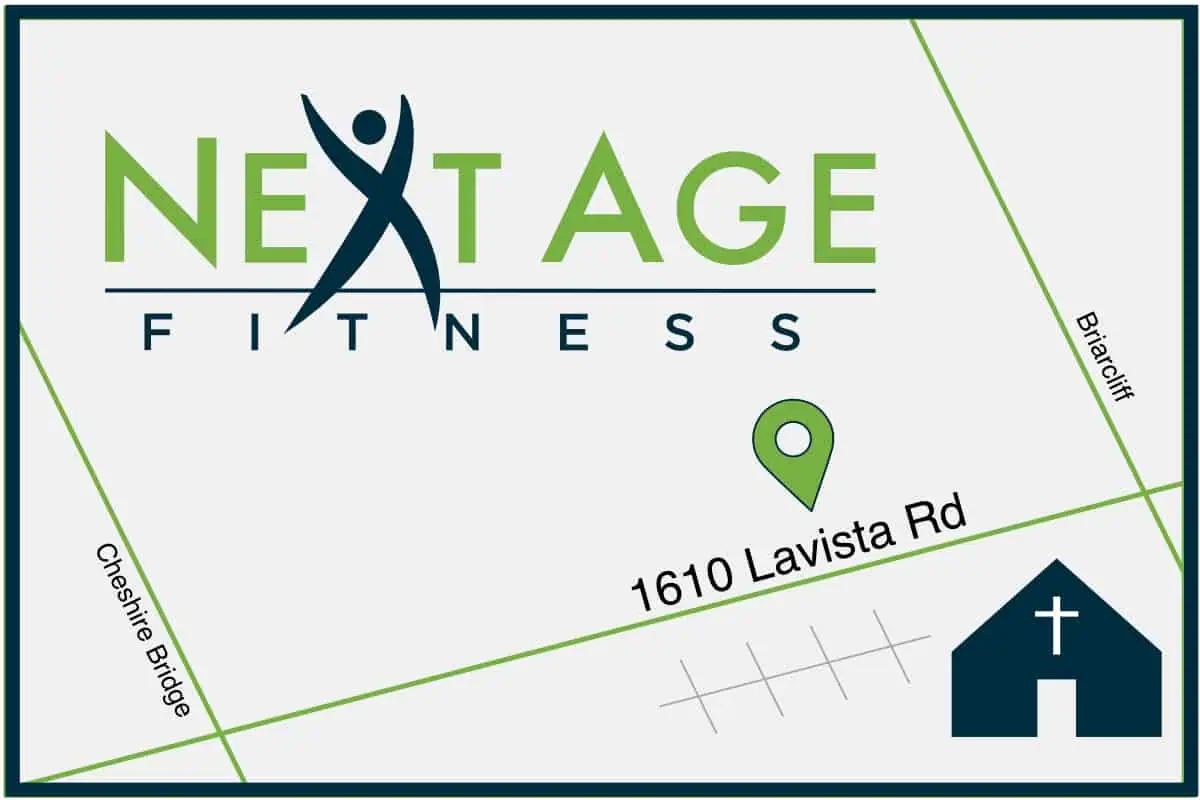
All fat isn’t the same.
When we think about losing weight and getting fit, we typically imagine ridding ourselves of subcutaneous fat — the kind stored just below the skin. Most of us are familiar with this kind of fat because it’s the fat you can see and pinch.
But there’s another kind of fat – visceral fat – you might not be as aware of.
Visceral fat is denser than subcutaneous fat. It’s stored deep in the body, surrounding your organs. A moderate amount of visceral fat is healthy [E1], because it insulates and protects your organs and plays a role in hormone regulation [E2]. However, too much visceral fat can be deadly.
How Visceral Fat Affects Your Health
The impact of visceral fat goes far beyond simply making your waist look larger. Excess levels can lead to insulin resistance, diabetes, and heart disease.[E3] It contributes to high blood pressure and increased ‘bad’ cholesterol [E5], and related hormonal changes can also tax your liver. Inflammation of your organs – or whole body – exacerbates all of these health issues. And recent studies have even linked excess visceral fat to dementia, asthma, and certain types of cancer.

What Causes Visceral Fat?
Many factors impact the way your body stores fat, including genetics, diet, stress, hormone levels, and lack of exercise. Some people are just more inclined to store fat around the middle than others. The way you handle stress also impacts how fat is stored. When your body senses danger (whether real or perceived) it produces cortisol – the “fight-or-flight” hormone. Elevated cortisol levels cause digestion to slow. Over time this disrupts your body’s normal fat hormone function [E4], which causes it to pack on and retain more visceral fat.
The dangers associated with elevated levels of visceral fat aren’t limited to the obese. Even people considered “classically thin” can unknowingly be at risk.
How do you know if you have excess visceral fat?
Fortunately, there are a number of indicators that can help determine if your body is storing an unhealthy amount of visceral fat. A good place to start is by comparing your relative size and proportions. As a general rule, waist circumference should be less than 40 inches for men and 35 for women[E6]. And the ratio of waist to hips should be less than 1 for men and less than 0.8 for women. The formula for calculating waist to hip is waist divided by hip. It’s important to note that while excess visceral fat often expands the waistline by pushing the mid-section out, some thin people with relatively small waistlines can also be at risk.
Technology reveals more than the eye can see.
Body scanning technology, like the 3D body scan that we use at Next Age Fitness can offer critical information beyond what you can measure with a scale or tape measure; in addition, it also provides you with the most popular measurements taken. With a 3D body scan, we can track your body’s percentage of fat vs lean mass. We can also track other health markers that will help you understand your risk associated with the way your body stores fat such as waist to hip ratio and torso volume vs leg volume (which can only be done with scanning, either DEXA or our 3d scanning). Knowing these numbers is incredibly helpful for establishing a baseline and in creating a plan to maintain or improve your health. It’s also important, in tracking your overall health, to be aware of changes in these numbers, particularly in relationship to changes in your diet, exercise, and age.
How to reduce visceral fat.
When you notice your pants getting tighter at the waist it’s tempting to think about exercise for quick spot reduction. But the truth is, exercise doesn’t eliminate fat in just one area like that. And while liposuction might help in reducing spots of subcutaneous fat, visceral fat is stored too deep in the abdomen for this type of procedure to be effective. Reducing your fat (both subcutaneous and visceral) requires a more holistic approach which gives you more bang for your effort. Here are some steps you can take to be healthier:
- Track your numbers: Get a 3D body scan to accurately establish your baseline and your level of risk. If you are unable to get a scan, carefully measure your waist and hips. Determine the ratio (ratio=w/h) to track progress. Continue to track those numbers over time as you change your diet. Those numbers will help you understand the success of your food plan so you can make further adjustments and move towards a healthier you.
- Eat a well-balanced diet: You can put a dent in your fat stores, through a combination of what you eat and exercise; however, the focus to losing fat must be on food. Look for a healthy eating plan that eliminates high-sugar foods and includes calcium (which reduces the storage of visceral fats). When it comes to losing fat, the food you eat is key. Follow a food plan carefully and then compare your effort to the results (see #1). Note that the bathroom scale is not a good tracking devise for health.
- Exercise: Resistance training and keeping active is helpful. Resistance/strength training should be prioritized as it gives the most benefit. Resistance training can be done traditionally using gravity based weights (45 min, 2 times a week) or with a 20-minute workout at Next Age Fitness. Resistance training and/or activity will help burn calories but more importantly keep you from adding to your fat storage while you create the deficit needed to use the previously stored energy you have (also known as fat).
- Manage stress. Explore stress reducing methods like meditation or learning to say no to non-essential tasks. And make sure you’re giving your body the sleep and silent time it needs to fully recharge. Mediative yoga is a good place to start.
Check these out if you are in Atlanta:

